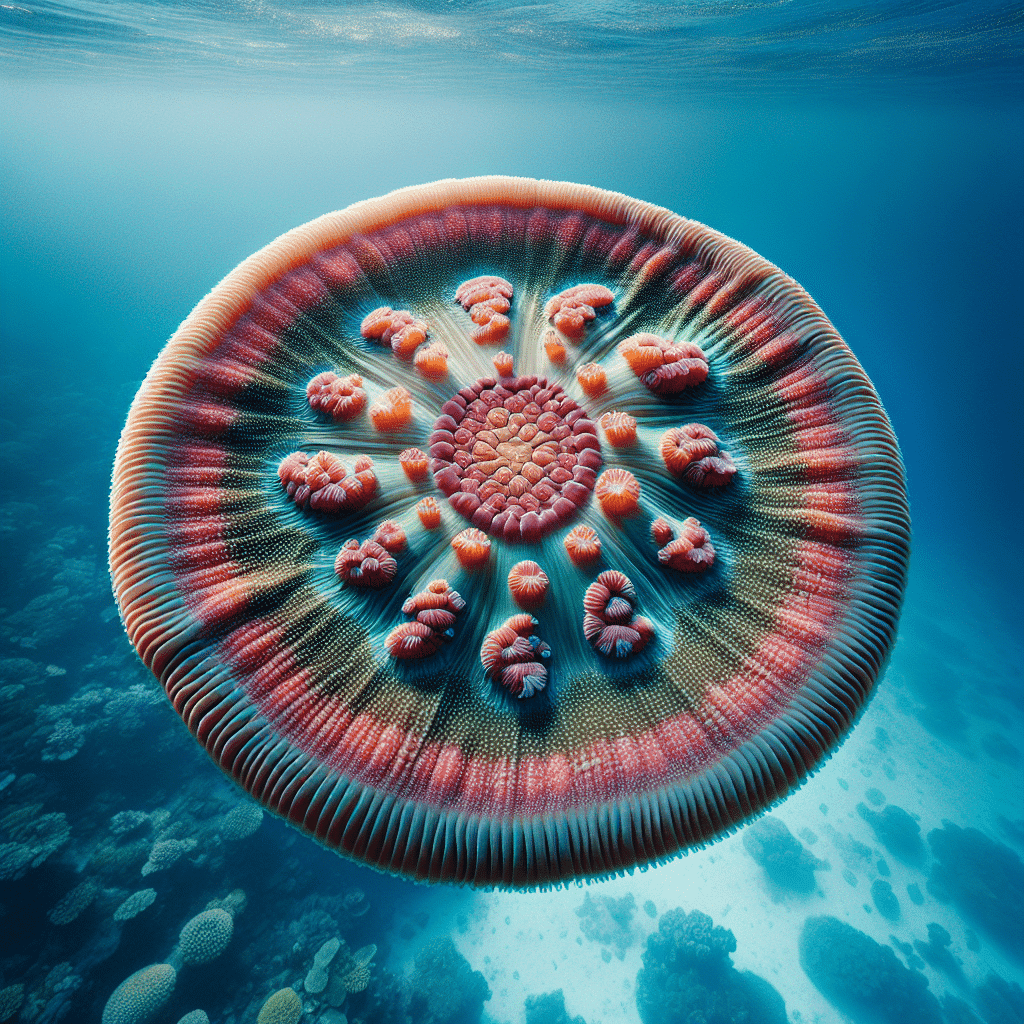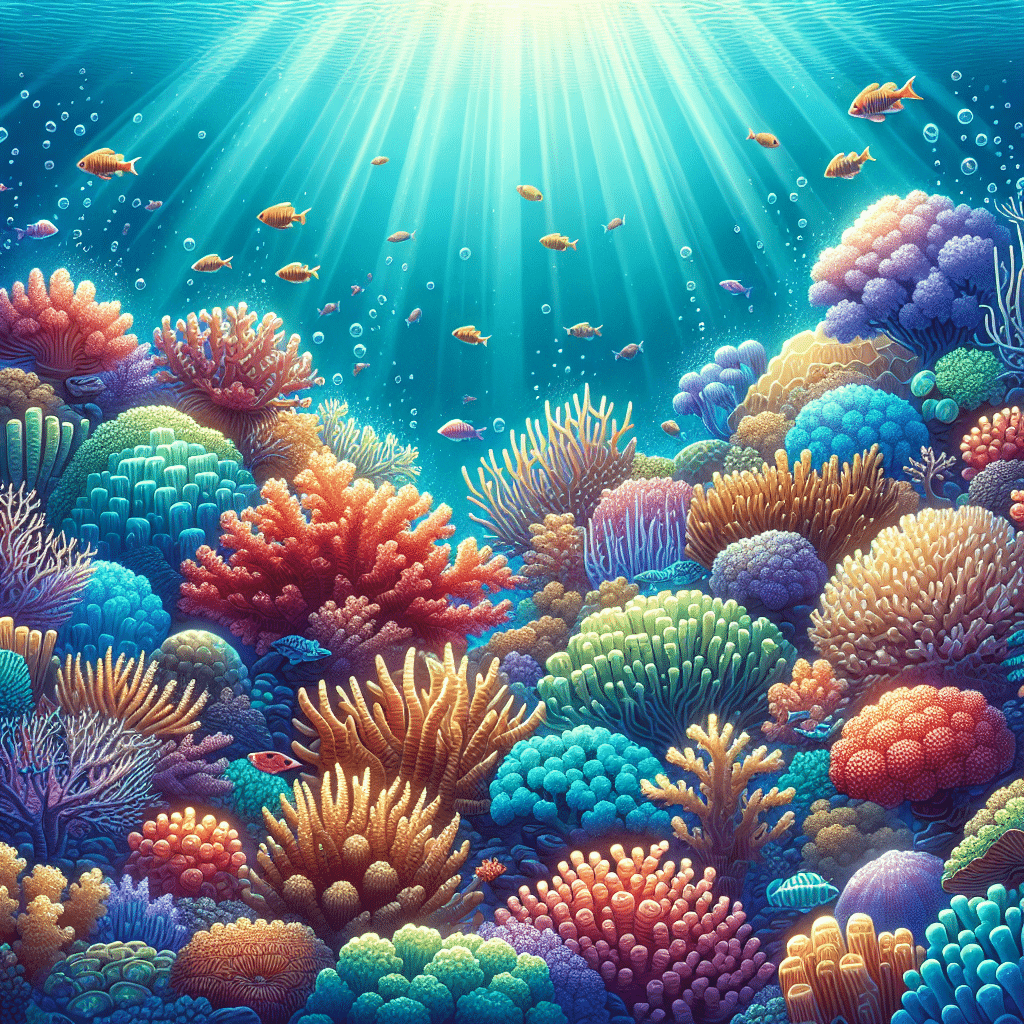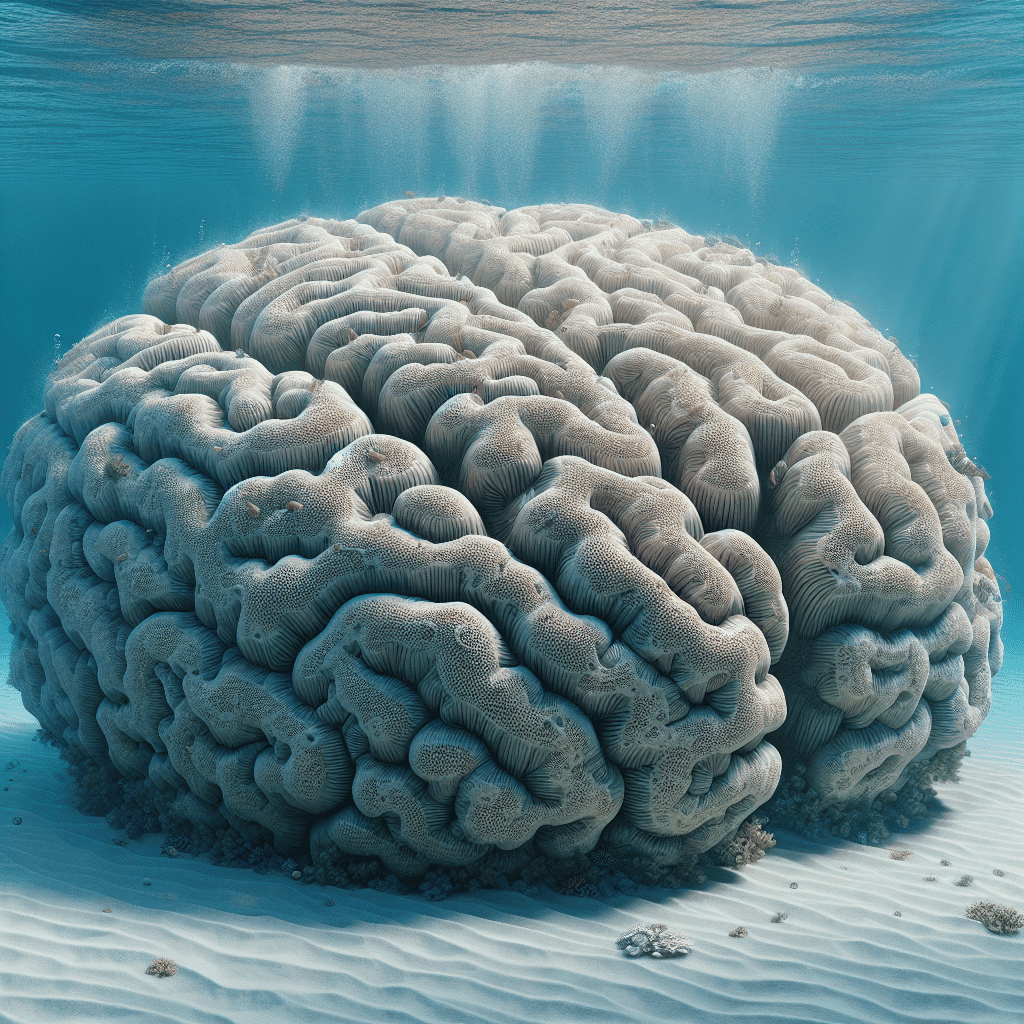Understanding Discosoma Corals
Mushroom Coral Basics
Discosoma is a fascinating genus of corals known as mushroom corals or mushroom anemones. These unique creatures belong to the order Corallimorpharia and are characterized by their disc-shaped bodies. Most Discosoma species produce large amounts of mucus, which helps them thrive in various environments. They come in a stunning array of colors, including metallic and fluorescent shades, as well as striped and spotted patterns. Their beauty makes them a popular choice for reef tank enthusiasts.
One of the remarkable features of Discosoma is their symbiotic relationship with zooxanthellae, photosynthetic dinoflagellates that reside within their tissues. This relationship allows some species to absorb nutrients produced by these microorganisms, which aids in their growth and health.
| Common Names | Scientific Classification |
|---|---|
| Mushroom Coral | Genus: Discosoma |
| Disc Anemone | Order: Corallimorpharia |
| Elephant Ear Mushroom |
Unique Characteristics of Discosoma
Discosoma mushrooms are known for their resilience, making them an ideal choice for both beginners and seasoned reef tank hobbyists. They can thrive in a wide variety of tank conditions and are tolerant of neglect, which is a huge plus for busy aquarium keepers (Tidal Gardens). Their ability to adapt to different environments means that they can be a colorful and low-maintenance addition to any reef setup.
The diverse color patterns and textures of Discosoma mushrooms appeal to many aquarists. Some varieties are particularly sought after, adding a unique flair to any aquarium display. Whether solid-colored or featuring intricate designs, these corals can enhance the aesthetic of a reef tank, making them a favored choice among enthusiasts. For more on different mushroom corals, check out our article on mushroom coral.
In summary, Discosoma corals are not only visually striking but also hardy, making them a fantastic option for anyone looking to add some vibrant life to their reef tank.
Care and Placement
Caring for Discosoma corals involves understanding their specific requirements for lighting, water flow, and feeding. Here’s what I’ve learned about these fascinating mushrooms.
Lighting Requirements
Discosoma corals thrive in lower light conditions. They are quite sensitive to bright lighting and can develop small white bumps on their polyps if exposed to excessive light (Fragbox). While they can adapt to medium light, it’s best to initially keep them in lower-light areas to prevent bleaching and damage from high light exposure.
Here’s a quick overview of lighting preferences:
| Lighting Level | Description |
|---|---|
| Low | Ideal for preventing damage and promoting health |
| Medium | Can enhance coloration but requires careful acclimation |
| High | Not recommended, can lead to stress and white bumps |
For those looking to see vibrant colors, Discosoma corals may display more attractive hues under stronger lighting, but overexposure should be avoided. Normal output fluorescents are usually sufficient for these corals, making them relatively easy to care for (Tidal Gardens).
Water Flow Considerations
When it comes to water flow, Discosoma corals prefer low to moderate flow environments. Most species do best in low flow, which helps them to retain their shape and prevents stress (Top Shelf Aquatics).
Here’s a summary of water flow preferences:
| Flow Rate | Description |
|---|---|
| Low | Best for maintaining health and shape |
| Moderate | Acceptable but should be monitored closely |
| High | Not suitable, can cause damage |
By placing Discosoma in areas with gentle movement, they can thrive and display their unique characteristics without the risk of damage.
Feeding Discosoma Corals
Feeding Discosoma corals can enhance their health and coloration. They derive much of their energy from zooxanthellae, but I’ve found that they can also benefit from supplemental feeding in a reef aquarium environment. They do well in low flow areas, which allows them to capture food particles more effectively (Tidal Gardens).
Here are some feeding tips:
| Feeding Method | Description |
|---|---|
| Target Feeding | Use a pipette or turkey baster to deliver food directly to the coral |
| Broadcast Feeding | Dispense food into the water column, allowing corals to catch particles |
I recommend feeding them a mix of high-quality coral foods and small particles, ensuring they get the nutrients they need while maintaining a healthy environment. By understanding their care requirements, I’ve found that Discosoma corals can be a wonderful addition to my reef tank. For further details on different coral types, check out articles on mushroom coral and brain coral.
Propagation Methods
When it comes to propagating discosoma, I find it quite rewarding. These mushrooms are forgiving and can grow from small fragments, making them an excellent choice for those new to coral propagation. There are two primary methods I like to use: fragging and pedal laceration.
Fragging Discosoma Corals
Fragging is a straightforward method for propagating discosoma corals. To do this, I take a clean razor blade and slice through the mouth of the mushroom coral. This method allows me to create multiple pieces from one coral, which can then be placed in different locations in my tank or traded with fellow hobbyists. Since discosoma can regenerate from these small fragments, I know I’m not harming the coral in the process.
| Step | Action |
|---|---|
| 1 | Gather necessary tools (clean razor blade, container for frags). |
| 2 | Cut through the mushroom’s mouth with the blade. |
| 3 | Place the frags in a separate container with water. |
| 4 | Allow frags to acclimate before placing them back in the tank. |
This method is not only effective but also fun, as I get to see new mushrooms develop over time.
Pedal Laceration Technique
Another technique I like for propagating discosoma is pedal laceration. This method involves allowing the mushroom to leave behind pieces of its foot, which can then grow into new mushrooms over time (Tidal Gardens). It’s a more passive approach that requires minimal intervention, making it a great option for beginners.
| Step | Action |
|---|---|
| 1 | Identify a healthy discosoma coral. |
| 2 | Leave the coral undisturbed; it will naturally shed parts of its foot. |
| 3 | Monitor the area for new growths from the foot. |
| 4 | Once established, cut the new mushrooms for placement elsewhere. |
This technique not only encourages growth but also helps maintain the health of your existing corals. Both methods are fantastic for expanding your collection of mushroom corals and enhancing your reef tank’s biodiversity.
If you’re interested in other coral propagation methods, check out my articles on brain coral and zoanthids. Happy propagating!
Common Diseases
When caring for my discosoma corals, I’ve encountered some common issues that can affect their health. Understanding these diseases can help in maintaining a thriving reef tank.
White Bumps on Polyps
One of the issues I sometimes see with my Discosoma corals is the appearance of small white bumps on the polyps. This condition can be a sign of stress, often caused by exposure to excessive lighting. Discosoma mushrooms thrive in lower-lighted areas, and too much light can lead to physical symptoms like these white bumps. If I notice this happening, I usually consider adjusting the lighting to create a more suitable environment for my corals.
| Symptoms | Causes | Solutions |
|---|---|---|
| White bumps on polyps | Excessive lighting | Reduce light intensity |
| Stress from environment | Create a more stable environment |
For more detailed care tips, check out our pages on corals and mushroom coral.
Effects of High Lighting
High lighting can lead to detrimental effects on Discosoma corals. Besides the visible white bumps, prolonged exposure to strong lighting can cause bleaching and weakened structures. I find that keeping my mushroom corals in lower light conditions helps them maintain their vibrant colors and overall health.
Most species of Discosoma are best suited for low to moderate light environments, which helps prevent stress and promote healthy growth. If I want to enhance coloration while avoiding stress, I can gradually acclimate my corals to medium light, ensuring they adapt without suffering from light shock.
| Lighting Level | Effects on Discosoma |
|---|---|
| Low | Healthy growth, vibrant colors |
| Moderate | Gradual acclimation possible |
| High | White bumps, bleaching, stress |
By being attentive to the lighting conditions and making adjustments as necessary, I can keep my Discosoma corals happy and healthy in my reef tank. For more information on coral care, visit our page on xenia or brain coral.
Habitat and Origin
Indo-Pacific Region
I find it fascinating that discosoma mushrooms are native to the vibrant Indo-Pacific region. They can be spotted in stunning locations like Fiji, Tonga, the Solomon Islands, and near Australia in the Great Barrier Reef (Tidal Gardens). These corals thrive in shallow reef environments where they can attach themselves to hard substrates, such as rocks or the reef itself.
| Location | Notable Features |
|---|---|
| Fiji | Rich biodiversity |
| Tonga | Vibrant coral reefs |
| Solomon Islands | Unique marine life |
| Great Barrier Reef | Iconic diving and snorkeling spots |
Preferred Aquarium Conditions
When it comes to keeping discosoma in a reef tank, there are a few conditions to keep in mind. These corals are generally considered hardy and suitable for reef aquariums. They prefer stable water parameters, which means that maintaining consistent pH, salinity, and temperature is essential.
Here’s a quick overview of the ideal conditions for discosoma:
| Parameter | Ideal Range |
|---|---|
| Temperature | 72°F – 78°F (22°C – 26°C) |
| Salinity | 1.023 – 1.025 SG |
| pH | 8.1 – 8.4 |
| Lighting | Moderate to high |
| Water Flow | Gentle to moderate |
They thrive best with moderate to high lighting and gentle water flow, making them a versatile choice for various reef setups. I often place them on the substrate or attach them to rocks to mimic their natural habitat. For more on other coral types, check out my articles on mushroom coral or brain coral.
Color Varieties
Striking Color Patterns
One of the most exciting aspects of keeping discosoma corals is the wide range of colors and patterns they exhibit. These mushrooms come in various hues, from bright greens and blues to rich purples and reds. Some varieties are solid-colored, while others feature mesmerizing patterns that can truly stand out in a reef tank. According to Tidal Gardens, these striking colors make discosoma mushrooms an appealing choice for hobbyists looking to enhance their aquariums.
| Color Variety | Description |
|---|---|
| Metallic Aqua | A vibrant blue-green mushroom that adds depth to any tank. |
| Bright Green | A lively color that can really pop against darker corals. |
| Deep Purple | Offers a rich contrast and is highly sought after by collectors. |
| Solid Red | A bold option that brings warmth to the aquarium. |
Aesthetic Preferences
Discosoma mushrooms are not only visually appealing but also versatile in their placement within an aquarium. They can complement various aesthetic themes, whether you prefer a natural reef setup or a more vibrant, colorful display. Their ability to thrive in low to moderate flow areas means they can be positioned alongside other corals without overwhelming the visual balance of the tank (Top Shelf Aquatics).
Many hobbyists appreciate the fact that discosoma mushrooms are a great choice for both beginners and experienced collectors. For those looking to add something unique to their aquarium, these corals can serve as rare showpieces that draw the eye and create a dynamic underwater landscape (Tidal Gardens). The diverse color options allow for creative combinations with other corals, such as ricordea and zoanthids, ensuring that every reef tank can have its own unique aesthetic.
Resilience and Maintenance
Hardy Nature
I’ve found that Discosoma mushrooms are among the most resilient corals in the reef aquarium hobby. They thrive in a wide variety of tanks and can withstand less-than-ideal conditions, making them a fantastic choice for both beginners and seasoned reef enthusiasts. Their hardiness means they can adapt to fluctuating water parameters, which is great for those of us who might not have the time to constantly monitor every detail. Discosoma corals generally require stable water conditions, moderate to high lighting, and gentle water flow to flourish (Dream Corals).
| Feature | Ideal Condition |
|---|---|
| Water Parameters | Stable |
| Lighting | Moderate to High |
| Water Flow | Gentle |
Tolerance for Neglect
One of the best aspects of keeping Discosoma is their tolerance for neglect. These corals don’t demand daily attention, which is a relief for busy hobbyists like me. They can thrive in high-nutrient systems, which can actually accelerate their growth and reproduction in aquariums. This means that if I miss a feeding or two, it’s not the end of the world. They are perfect for those who are still learning the ropes of coral care.
Due to their robust nature, Discosoma mushrooms can be a great addition to a reef tank, offering vibrant colors and patterns without the high maintenance that other corals might require. This makes them a go-to option for many aquarium setups. If you’re curious about other types of corals that are also easy to care for, check out the mushroom coral and zoanthids sections for more options.
Toxicity and Interactions
Toxin Production
Some species of Discosoma, particularly certain mushroom corals, are known to produce toxins. While these toxins are generally not harmful to humans, they can be detrimental to nearby corals. It’s essential to leave some space between mushroom corals and other coral species to prevent any negative interactions (Dream Corals).
| Coral Type | Toxin Production | Recommendations |
|---|---|---|
| Discosoma | Yes | Maintain distance from other corals |
| Other Mushroom Corals | Variable | Monitor interactions closely |
| Most Soft Corals | None | Safe to place nearby |
Interaction with Other Corals
The interactions between Discosoma and other corals can vary significantly based on their proximity. While many corals can coexist peacefully, the toxins from Discosoma can affect the health and growth of corals nearby. This is particularly relevant for sensitive species that may not tolerate the chemical environment created by mushroom corals.
When setting up your reef tank, consider the compatibility of Discosoma with other corals such as zoanthids, brain coral, and acropora. Keeping a careful watch on how these corals respond to one another can help in maintaining a healthy tank environment. Always observe for signs of distress or decline in neighboring corals.
By understanding the toxicity and interactions of Discosoma, I can create a thriving and harmonious reef tank, ensuring that all my corals, including mushroom coral varieties, can flourish together.



